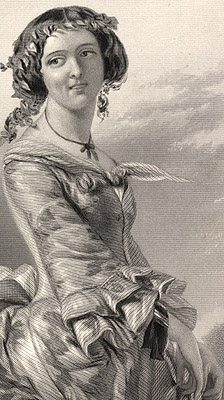
Entering the Literary Market
![]()
A constellation of nineteenth century social and religious beliefs reinforced
public opinion that women were ill suited for intellectual pursuits. It
was widely agreed, for example, that the nature of woman was dictated
by her biology, which destined her for marriage, motherhood, and little
else.
Nineteenth century English society viewed men and women as belonging to two distinct and separate spheres. Men controlled and participated in the public sphere of politics, business, and artistic achievement, while women were restricted to the private sphere of home, family, and motherhood. For women, the doctrine of "separate spheres" placed an ambition to write in direct conflict with their social roles.

Copyright
© 2002 Division of Rare & Manuscript
Collections
2B Carl A. Kroch Library, Cornell University, Ithaca, NY, 14853
Phone Number: (607) 255-3530. Fax Number: (607) 255-9524
For
reference questions, send mail to:
rareref@cornell.edu
If you have questions or comments about the site, send mail to: webmaster.